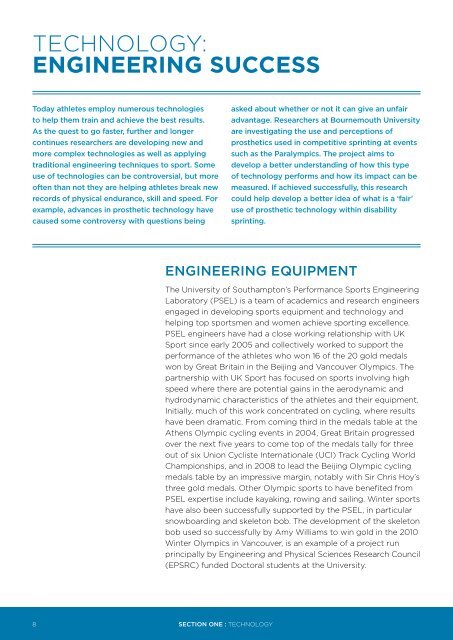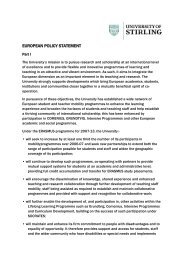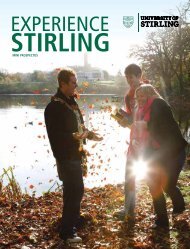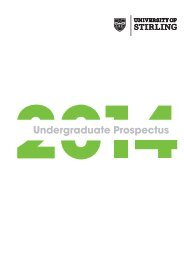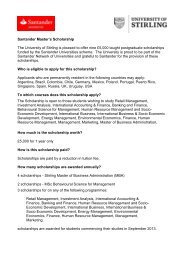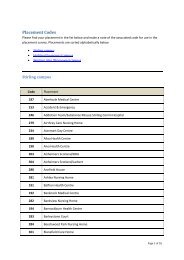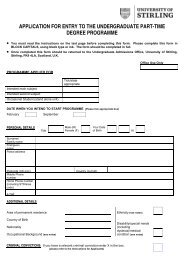Supporting a uK SucceSS Story: The impacT of - Research Councils ...
Supporting a uK SucceSS Story: The impacT of - Research Councils ...
Supporting a uK SucceSS Story: The impacT of - Research Councils ...
Create successful ePaper yourself
Turn your PDF publications into a flip-book with our unique Google optimized e-Paper software.
Technology:<br />
Engineering success<br />
Today athletes employ numerous technologies<br />
to help them train and achieve the best results.<br />
As the quest to go faster, further and longer<br />
continues researchers are developing new and<br />
more complex technologies as well as applying<br />
traditional engineering techniques to sport. Some<br />
use <strong>of</strong> technologies can be controversial, but more<br />
<strong>of</strong>ten than not they are helping athletes break new<br />
records <strong>of</strong> physical endurance, skill and speed. For<br />
example, advances in prosthetic technology have<br />
caused some controversy with questions being<br />
asked about whether or not it can give an unfair<br />
advantage. <strong>Research</strong>ers at Bournemouth University<br />
are investigating the use and perceptions <strong>of</strong><br />
prosthetics used in competitive sprinting at events<br />
such as the Paralympics. <strong>The</strong> project aims to<br />
develop a better understanding <strong>of</strong> how this type<br />
<strong>of</strong> technology performs and how its impact can be<br />
measured. If achieved successfully, this research<br />
could help develop a better idea <strong>of</strong> what is a ‘fair’<br />
use <strong>of</strong> prosthetic technology within disability<br />
sprinting.<br />
Engineering equipment<br />
<strong>The</strong> University <strong>of</strong> Southampton’s Performance Sports Engineering<br />
Laboratory (PSEL) is a team <strong>of</strong> academics and research engineers<br />
engaged in developing sports equipment and technology and<br />
helping top sportsmen and women achieve sporting excellence.<br />
PSEL engineers have had a close working relationship with UK<br />
Sport since early 2005 and collectively worked to support the<br />
performance <strong>of</strong> the athletes who won 16 <strong>of</strong> the 20 gold medals<br />
won by Great Britain in the Beijing and Vancouver Olympics. <strong>The</strong><br />
partnership with UK Sport has focused on sports involving high<br />
speed where there are potential gains in the aerodynamic and<br />
hydrodynamic characteristics <strong>of</strong> the athletes and their equipment.<br />
Initially, much <strong>of</strong> this work concentrated on cycling, where results<br />
have been dramatic. From coming third in the medals table at the<br />
Athens Olympic cycling events in 2004, Great Britain progressed<br />
over the next five years to come top <strong>of</strong> the medals tally for three<br />
out <strong>of</strong> six Union Cycliste Internationale (UCI) Track Cycling World<br />
Championships, and in 2008 to lead the Beijing Olympic cycling<br />
medals table by an impressive margin, notably with Sir Chris Hoy’s<br />
three gold medals. Other Olympic sports to have benefited from<br />
PSEL expertise include kayaking, rowing and sailing. Winter sports<br />
have also been successfully supported by the PSEL, in particular<br />
snowboarding and skeleton bob. <strong>The</strong> development <strong>of</strong> the skeleton<br />
bob used so successfully by Amy Williams to win gold in the 2010<br />
Winter Olympics in Vancouver, is an example <strong>of</strong> a project run<br />
principally by Engineering and Physical Sciences <strong>Research</strong> Council<br />
(EPSRC) funded Doctoral students at the University.<br />
8<br />
SECTION ONE : TECHNOLOGY


